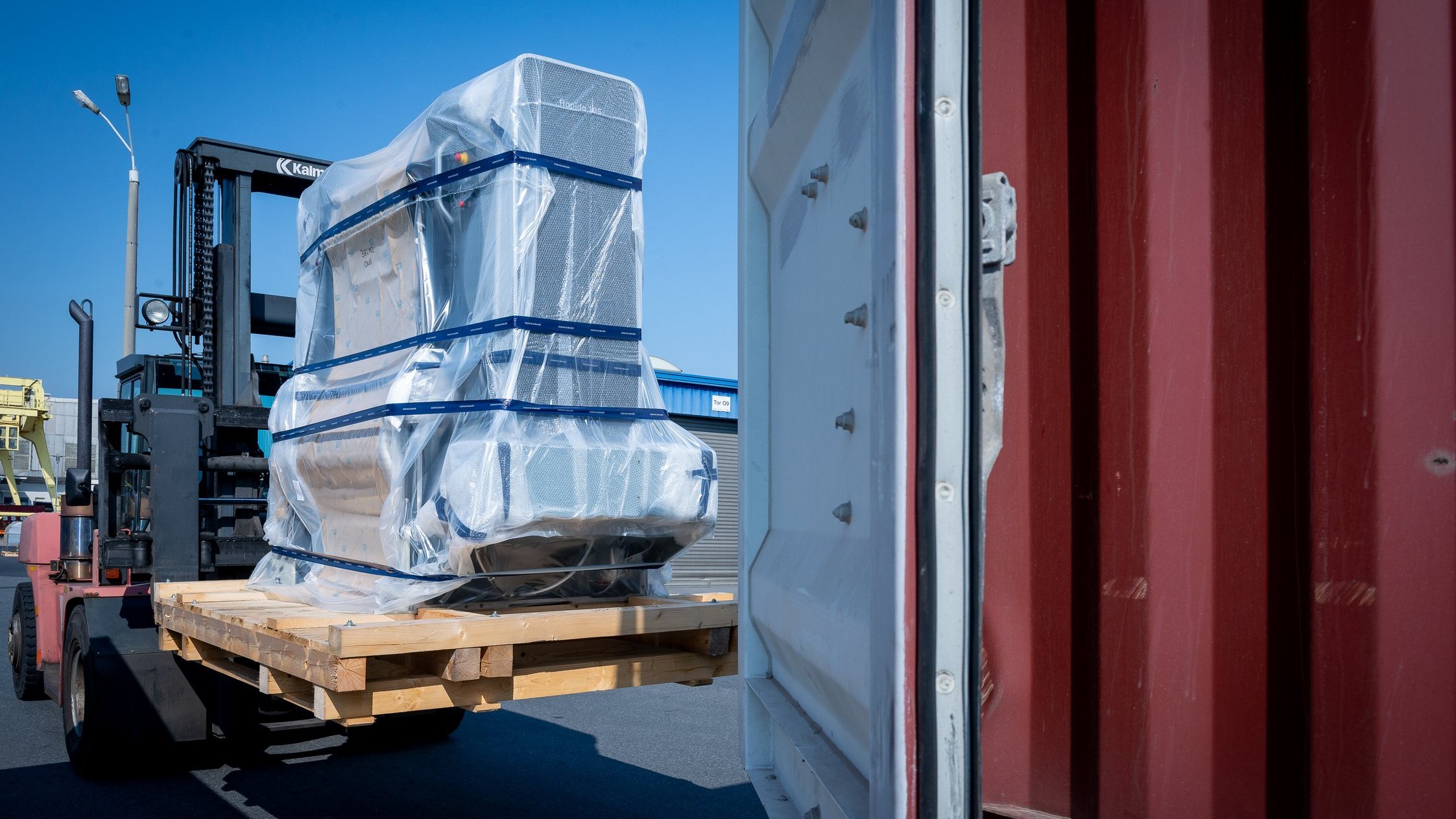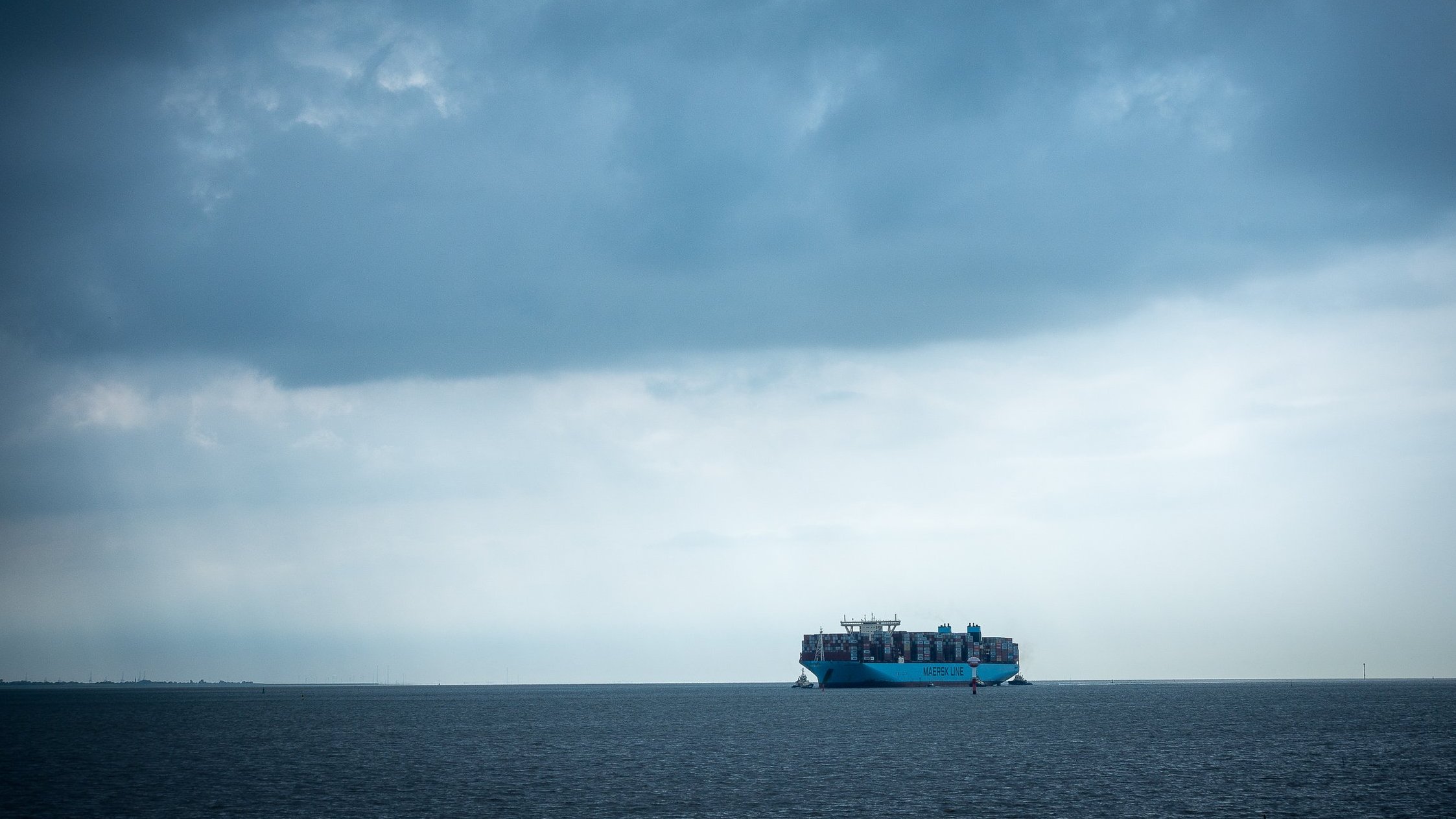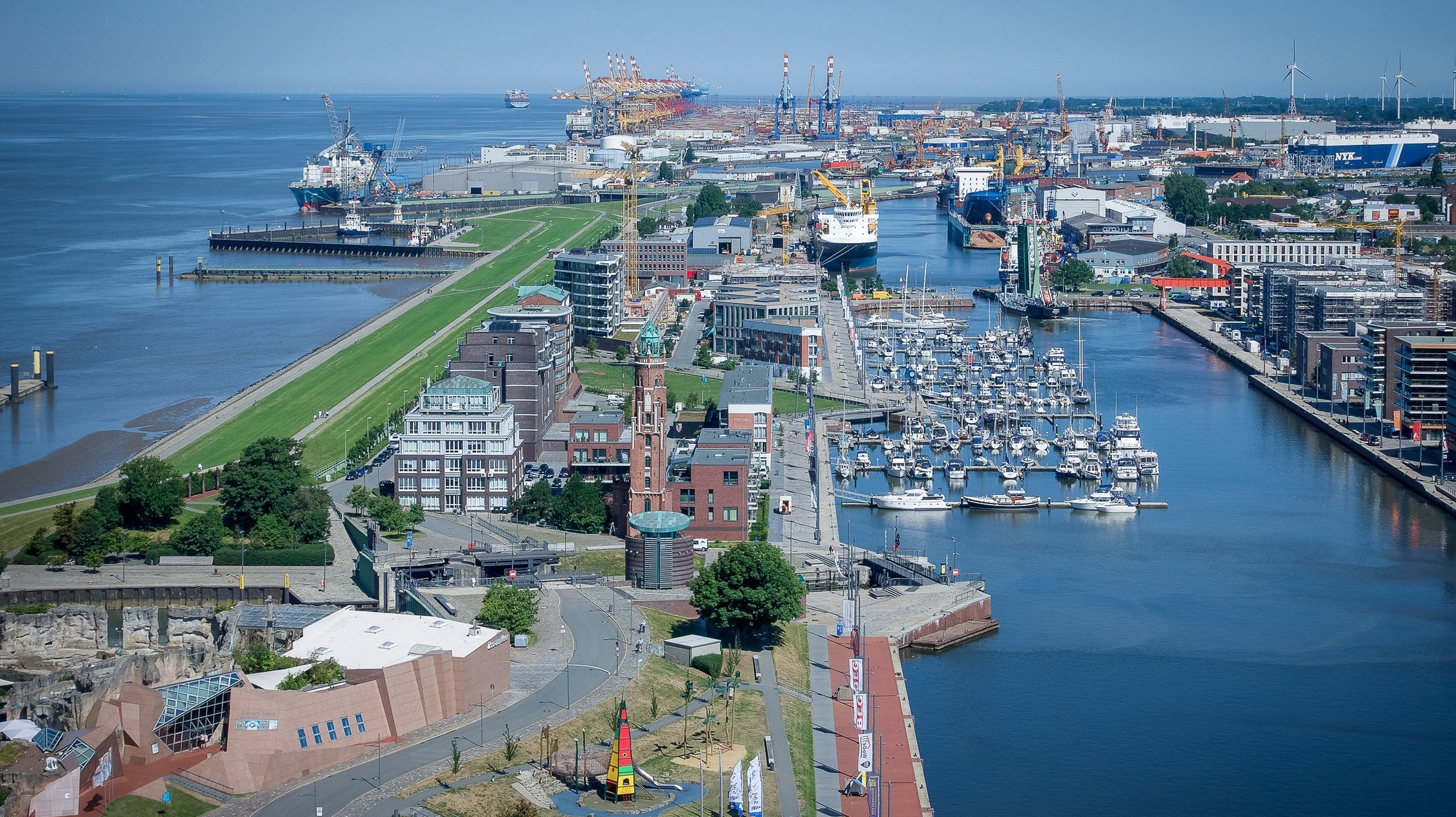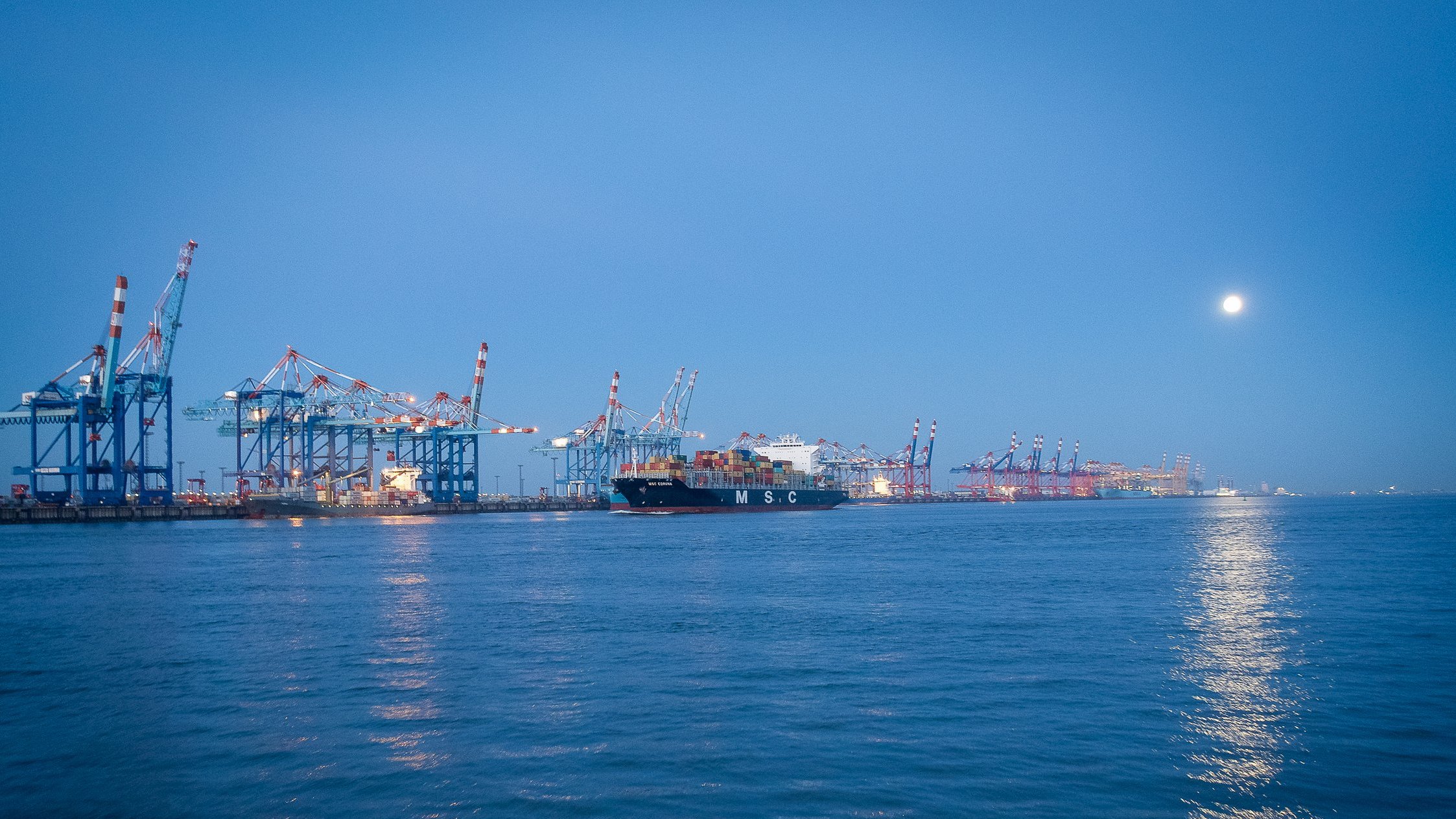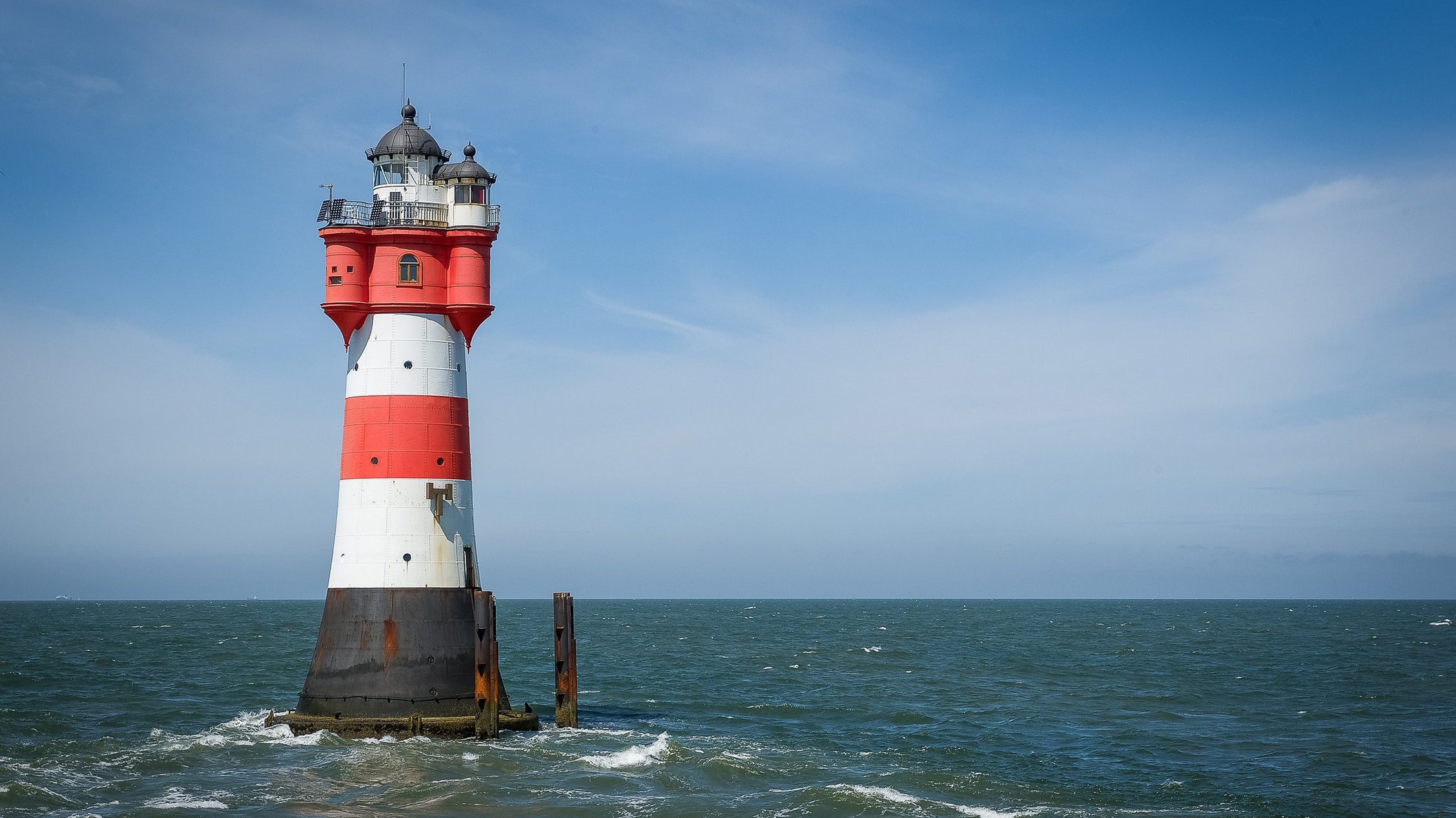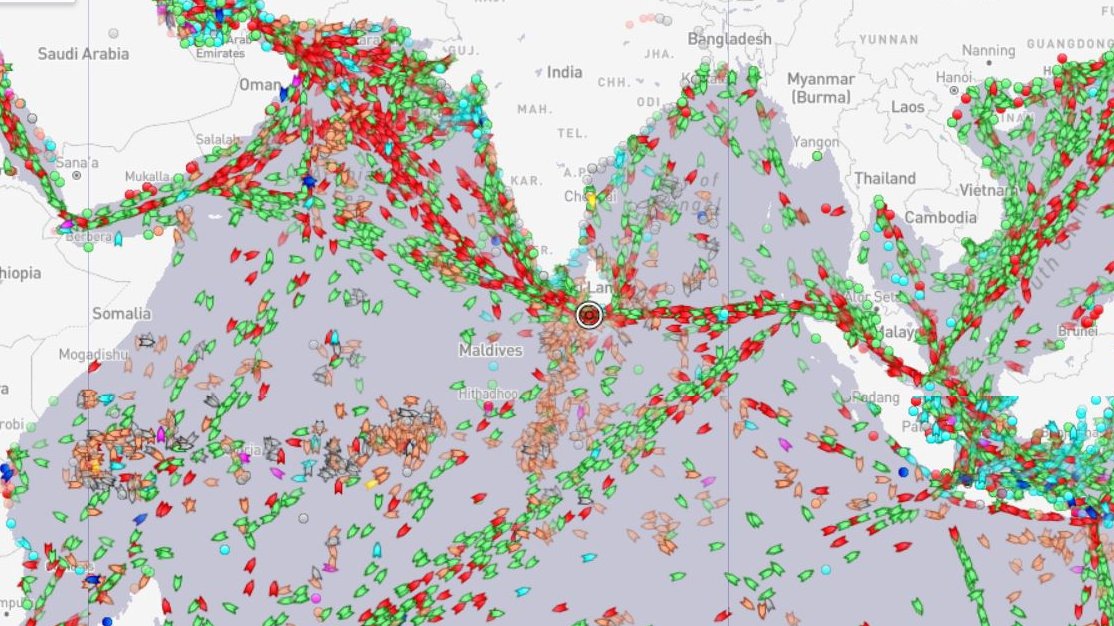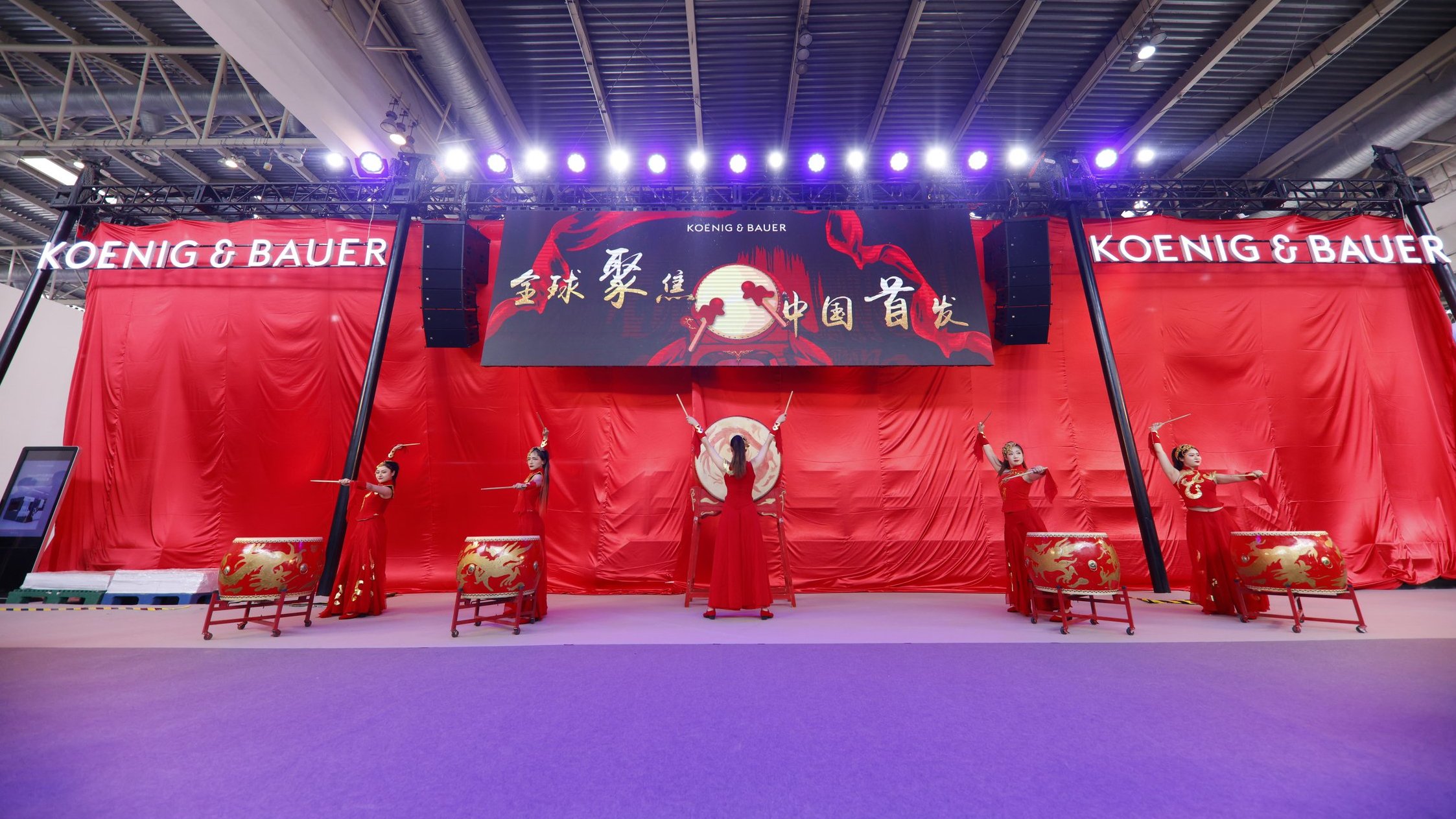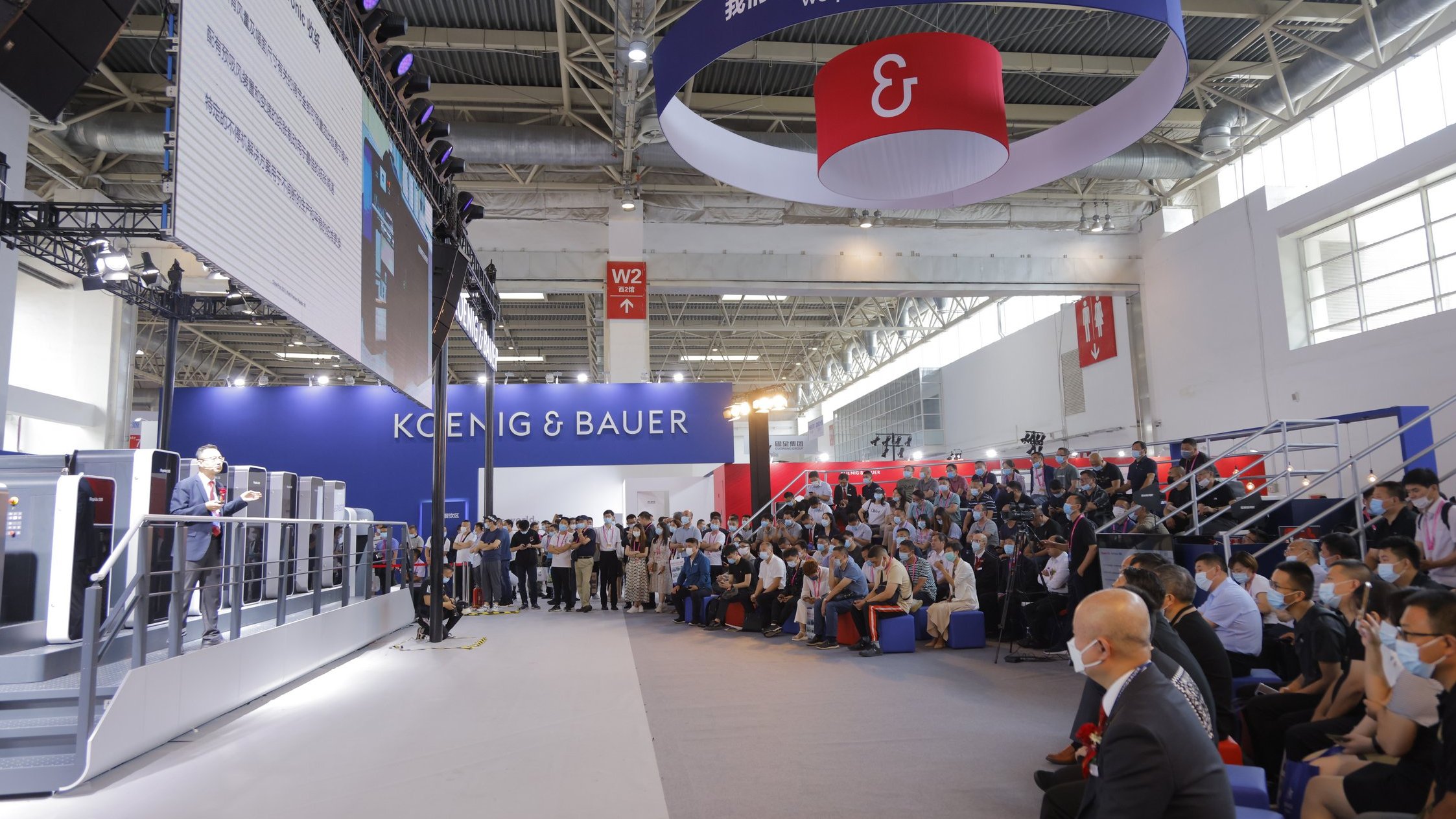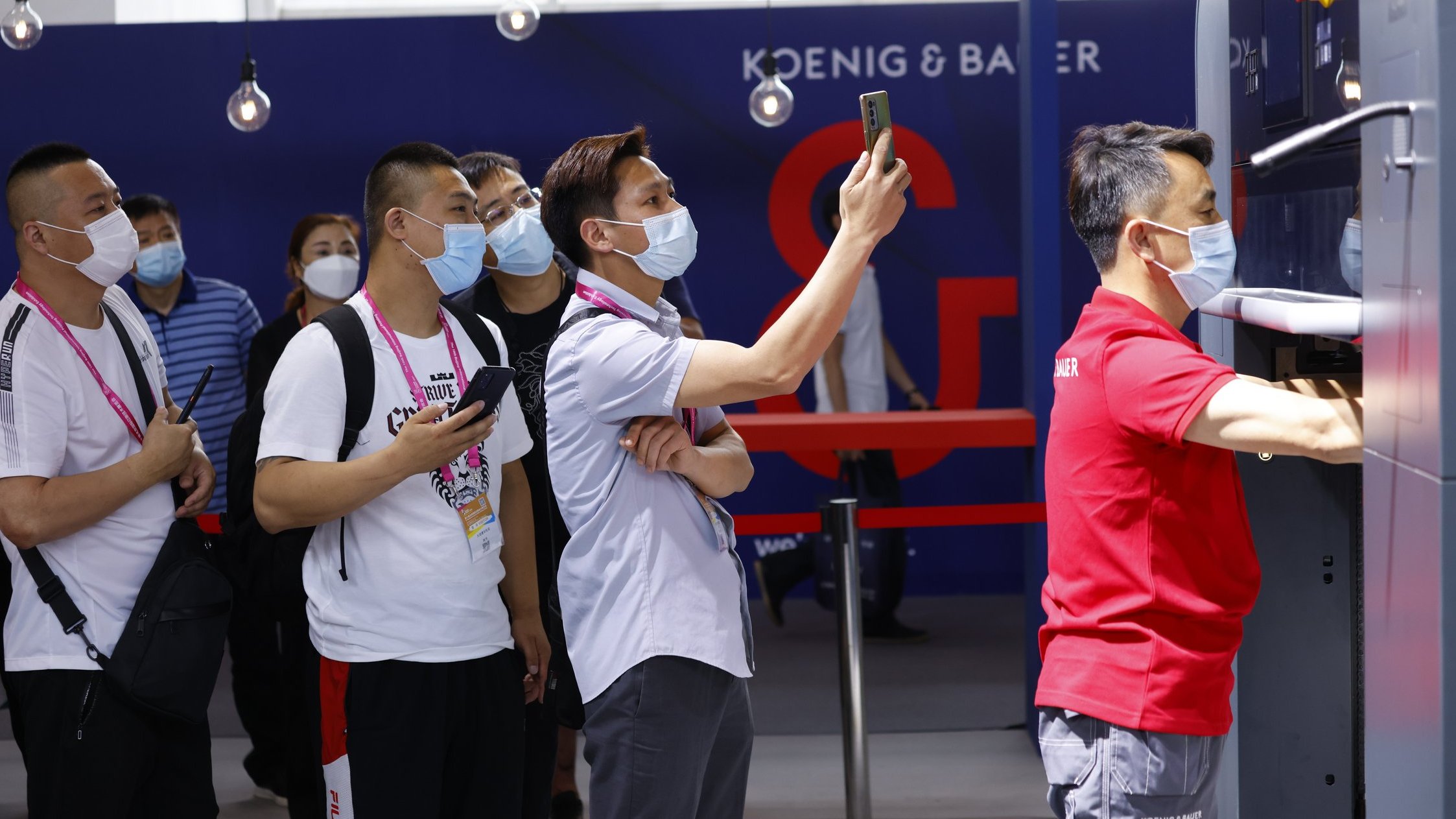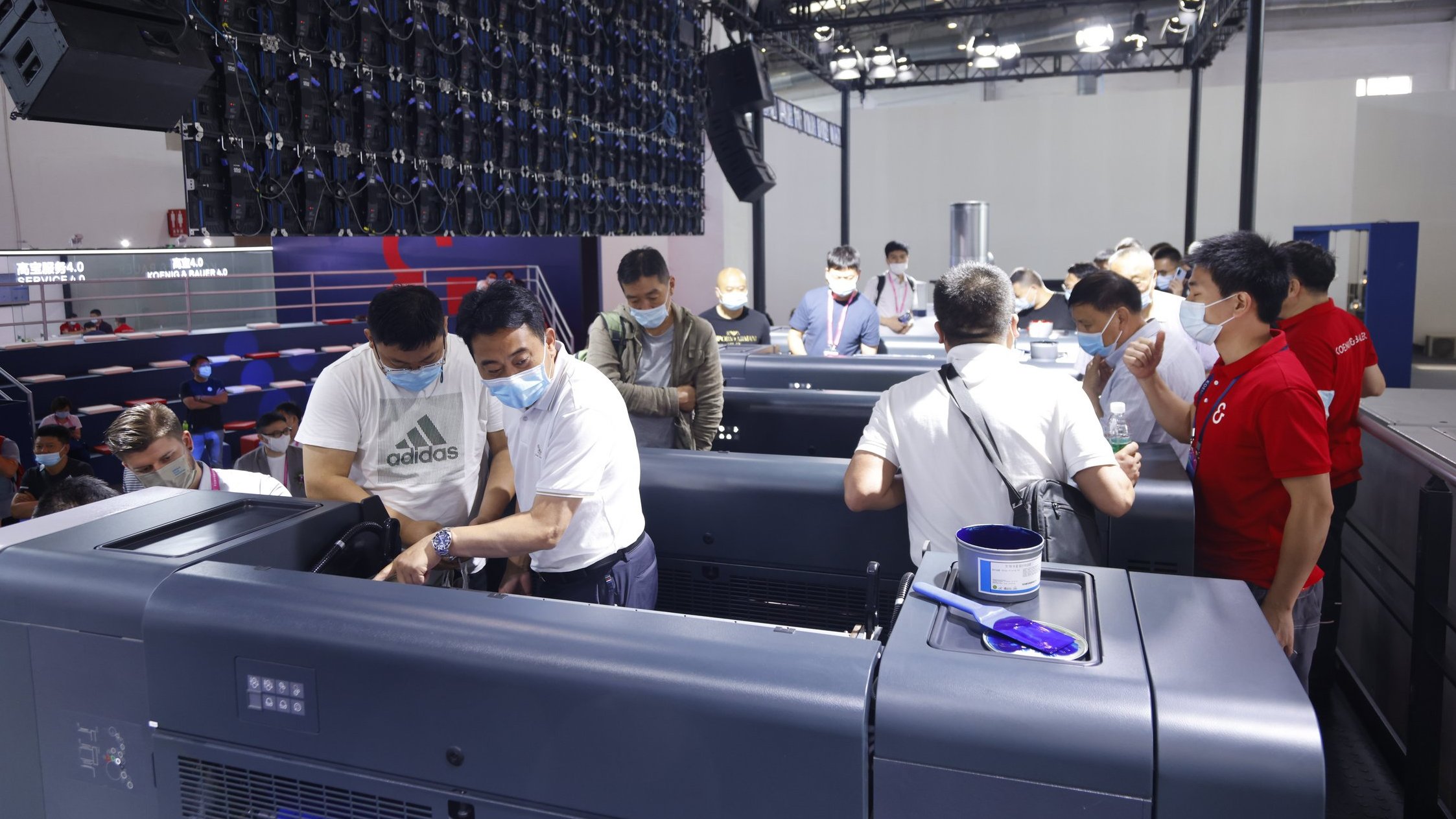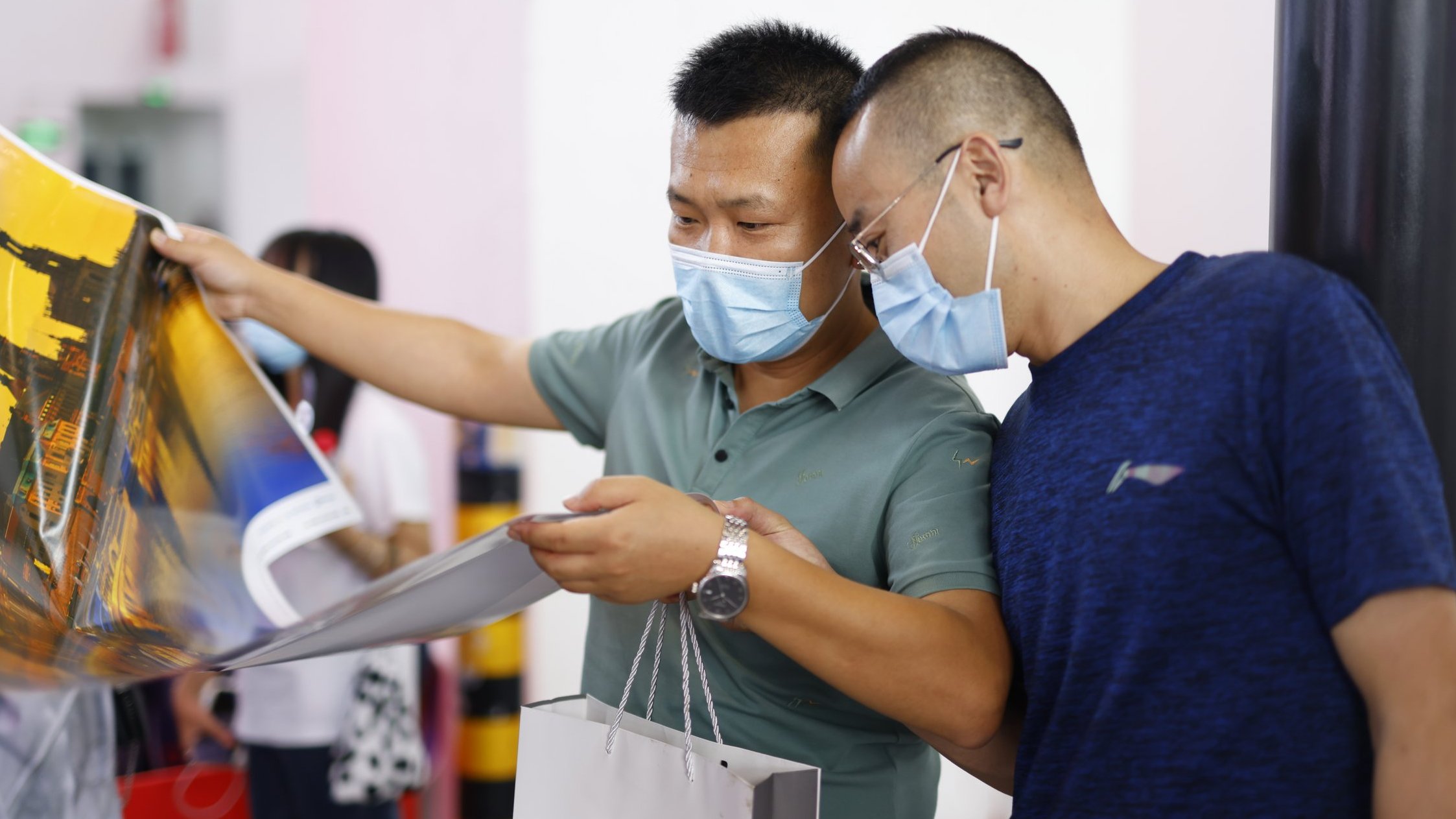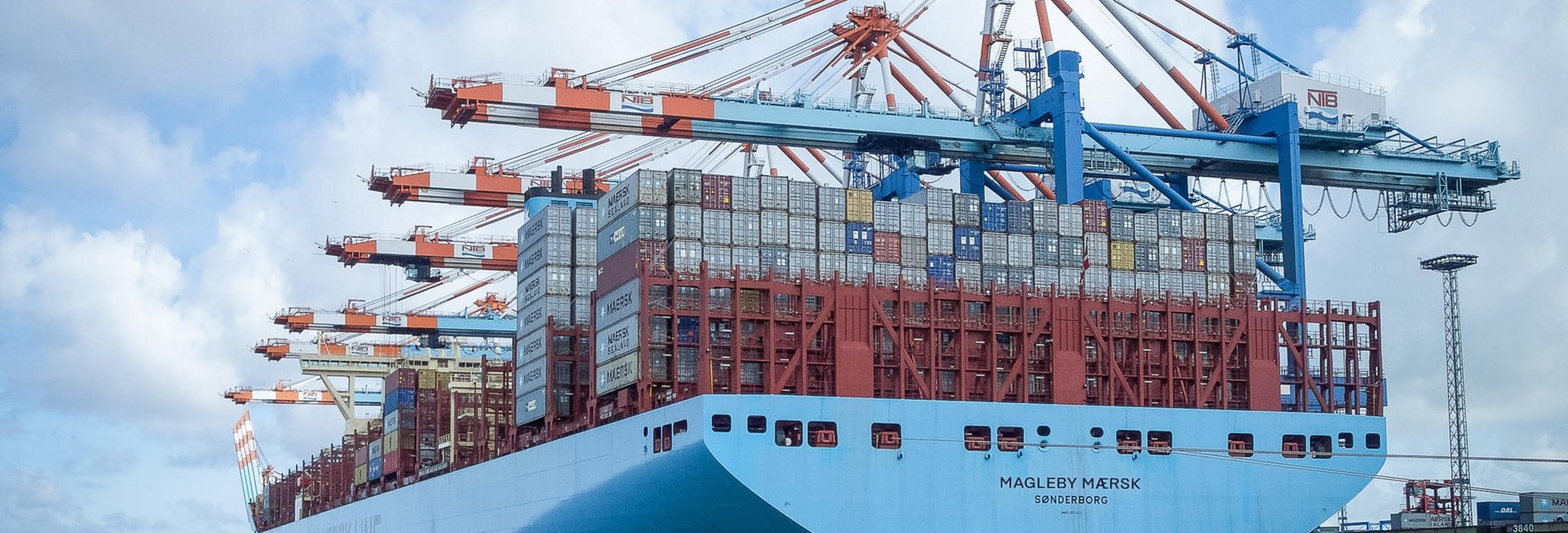
The Rapida 105 on an exciting journey halfway around the world
It was a pretty unusual scene for many people: in June 2021, the China Print trade show in Beijing was one of the first in-person trade fairs for printing machine engineering to open its doors again. The showpiece on Koenig & Bauer’s stand, measuring more than 1,000 m², was the new generation of Rapida 105 – the world première in the current corporate design and with a whole host of additional automated features. But before the machine could make its appearance, it had to embark on a long journey.
With the world première due to take place at China Print, all eyes were on the Rapida 105’s journey, both in Radebeul and in China. If the machine could talk, it would doubtlessly have some interesting tales to tell about its journey.
After the final assembly and printing at the factory, including a few photo and video sessions, staff in Germany dismantled the Rapida 105, allowing the different units to be packed relatively compactly in three containers. On 21st April, they started their journey overland to Bremerhaven where they were loaded aboard ship at the container terminal. But it wasn’t just any ship, it was the Magleby Maersk – currently one of the largest container giants in the world. On 28th April at exactly 3.13 p.m., the colossus – almost 400 metres long and with a capacity of more than 18,000 containers – set off from the quay wall. Around 2½ hours later, our containers saw the Roter Sand lighthouse and, with it, Germany’s last outpost.
Stopovers brought the Rapida 105 to Rotterdam in the Netherlands on 4th May, Port Said in Egypt on 8th May, Tanjun Pelepas in Malaysia on 20th May and Hongquiao (Shanghai) on 27th May before the container ship finally arrived in Tianjin on 30th May. The ship travelled almost five weeks through the English Channel and along the western coast of Europe, through the Strait of Gibraltar into the Mediterranean, through the Suez Canal into the Red Sea, through the Golf of Aden and the Arabian Sea into the Strait of Malacca, and later through the South China and East China Seas into the Bohai Sea to its destination, Tianjin.
The highlights of the Rapida 105 (maximum sheet format 720/740 x 1,050 mm) include the many features from the other medium format series such as the feed board with a single central suction belt, preset capabilities and extensive measuring and control systems. The sheet feeder, infeed and delivery have large touch displays instead of the previous controls for selecting machine functions. Operators have extra machine features (for example, perfecting for 4-over-4 production) and far more process integration and workflow solutions at their disposal.
All the data-based digital services for the Rapida 105 are, of course, also available – the main one being the customer community as the central contact point. Just like its even more automated relatives, the Rapida 105 generation can also be used for packaging, commercial and label printing. It thereby allows companies to expand their product range and exploit new potential for commercial success.
Already on the first two days of the trade fair, several companies signed contracts for delivery of a new Rapida 105. During and after China Print, more companies from all round the country also did the same. It’s no surprise then that Walter Zehner, CEO of Koenig & Bauer Greater China, was more than satisfied with the outcome of the exhibition: “The success far exceeded our expectations. In terms of the number of orders received, we were able to post a new record for China Print.” Dietmar Heyduck, senior vice-president for sales at Koenig & Bauer Sheetfed, is equally happy: “My sincere thanks go to our customers for continuing to place their trust in our products, and to the Koenig & Bauer teams in both China and Germany for a fantastic trade fair.”

